The FBP M/948: A 1940s design in a 1960s war.
Posted by Dan the Man :D on Feb 3rd 2025
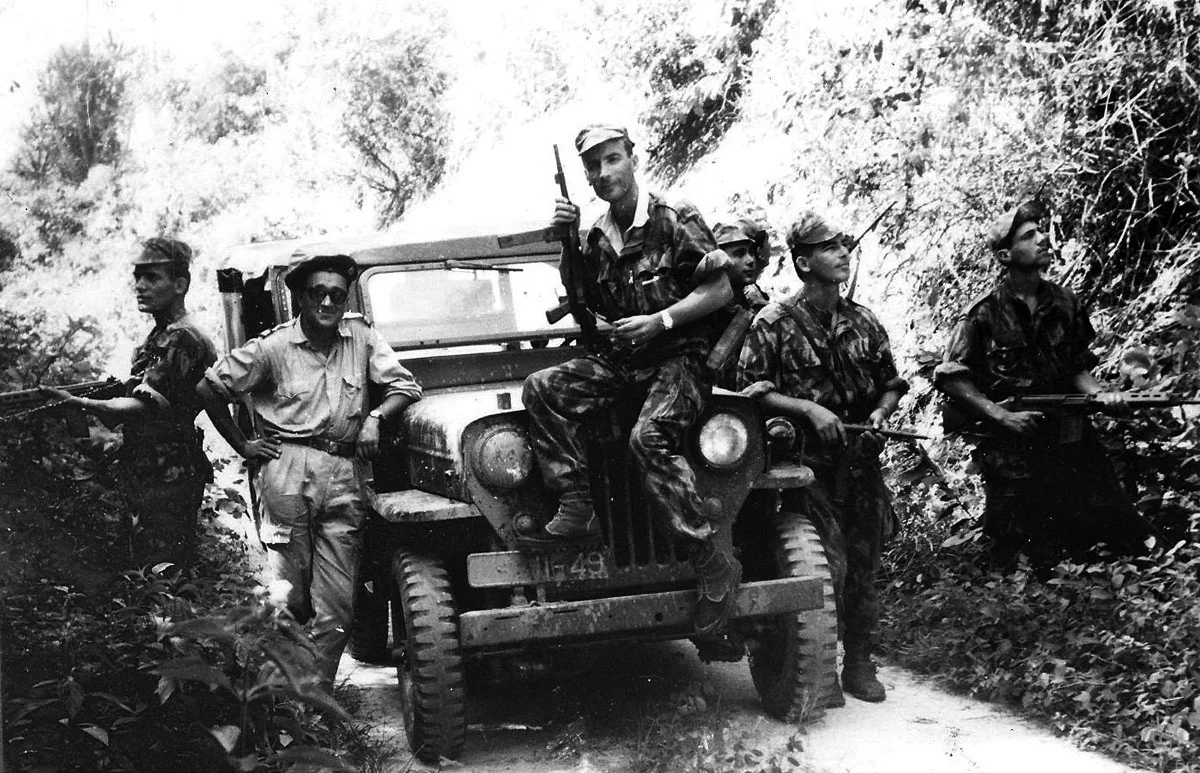
Image (1): A Portuguese soldier sits on a jeep and poses for a picture with his FBP.
Angola, 1963
The Angolan dust burns your eyes as your surplus jeep comes screeching to a halt. The order to disembark is given, and as you obediently dismount, your patrol sergeant hands you a bizarre compact firearm known simply as an "FBP". You gaze longingly at your comrades with full sized FN FAL and G3 rifles slung over their shoulders. You do what you can with what you have you think as you begin loading your curious sub-gun and dutifully fall into patrol formation. Thus armed, you take your first steps into your mandatory period of service patrolling the Angolan bush in search of rebel fighters.
This scene and many like it were taking place all across Portuguese-occupied areas of Africa during the 1960s.This signaled the genesis of their one and only domestically designed sub-machinegun. The M/948 sub-machine gun or simply "FBP" (named after the factory it was manufactured by) was an intriguing example of sub-machine gun development in an era that would soon become dominated by high-caliber battle rifles. Come along with me as we analyze how the FBP, which was considered cutting-edge in 1948 at its introduction, would see its first and only service decades later by which point it was already largely out of date and obsolete.
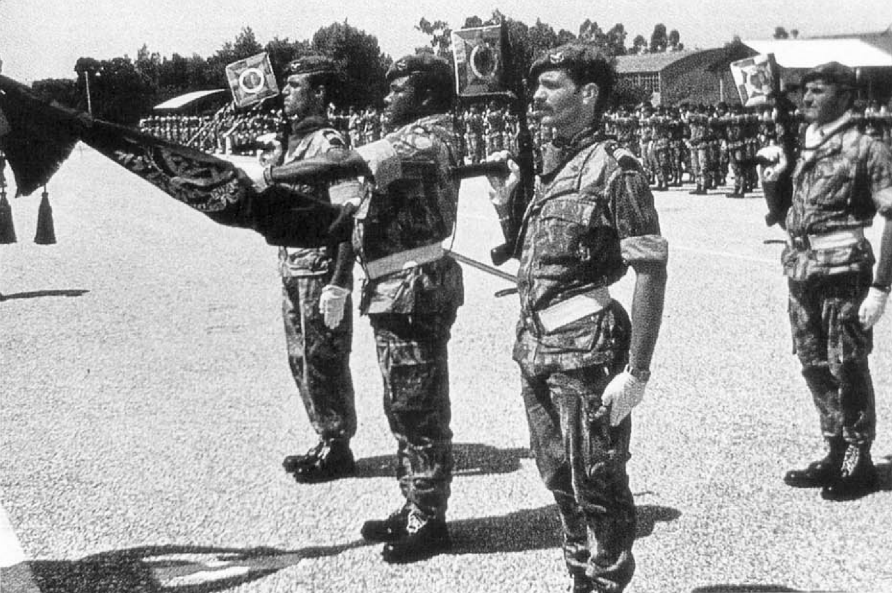
Image (2): Portuguese air force soldiers at parade armed with FPB sub-machine guns.
Origin & development
The design of the FBP found its beginnings in the mind of one Gonçalves Cardoso, a Portuguese artillery officer who completed his first design in 1940. Unfortunately for Cardoso, the whole "World War Two" conflagration caused the Portuguese government to shelve his product for the duration of the conflict. They had slightly bigger fish to fry at the moment.
By 1945 the Portuguese government realized that its policy of exclusively importing their military arms from other countries probably wasn't the safest route as the world geared up for the Cold War. This fact along with generous aid provided by the United States via the Marshall Plan breathed fresh life into the floundering Portuguese arms industry. The aid prompted the Portuguese to establish new arms plants and upgrade old ones, with millions of dollars invested from the U.S. for the manufacture of arms, ammunition, and matériel for the Portuguese military. The plant of importance to us is the Fábrica Militar de Braço de Prata where the FBP was manufactured and received its official designation "Fabrica Braço Prato" (FBP).
Design and function

Image (3): Portuguese air force soldiers at parade armed with FPB sub-machine guns.
The first model of the FBP was designated the "Model 48 F.B.P.". Weighing 3.77 kilograms (8~ pounds in freedom units) and chambered in 9x19 Parabellum it utilized a simple open-bolt blowback action. It was most notably characterized by its inspiration or downright copying from (then) contemporary sub-machine guns. It utilized a hefty bolt and telescoping spring assembly reminiscent of the MP-40, allowing it to be fired accurately from a compact frame. The overall frame, firing mechanism, and stock were adopted from the M3 Grease gun providing soldiers with a battle-tested frame that could be adjusted per the needs of the soldier in the moment. Additionally, the magazine well and mag were directly taken from the Sten, with the FBP being compatible with surplus Sten mags along with its official 21 & 32 round magazines of Portuguese manufacture. This added to its low cost of manufacture and operation due to the World War that had recently concluded providing an abundance of cheap Sten magazines that could be used as Ersatz FBP magazines.
These design features made the FBP an affordable, simple, and reliable SMG for Portuguese soldiers. My favorite part about it is the addition of optional bayonet lugs for a "Stiletto" style bayonet on the end. I've SCOURED the internet looking for any primary sources describing the tactical use of bayonet mounted FBPs and am sadly forced to rely on my imagination. It does look sick though! There's an adapter that can be fitted onto the lug to fit an even longer M937 K98 bayonet. It's ridiculous and I love it. I'm always a fan of SMGs that are so front heavy with bayonet weight that you can't efficiently aim them!
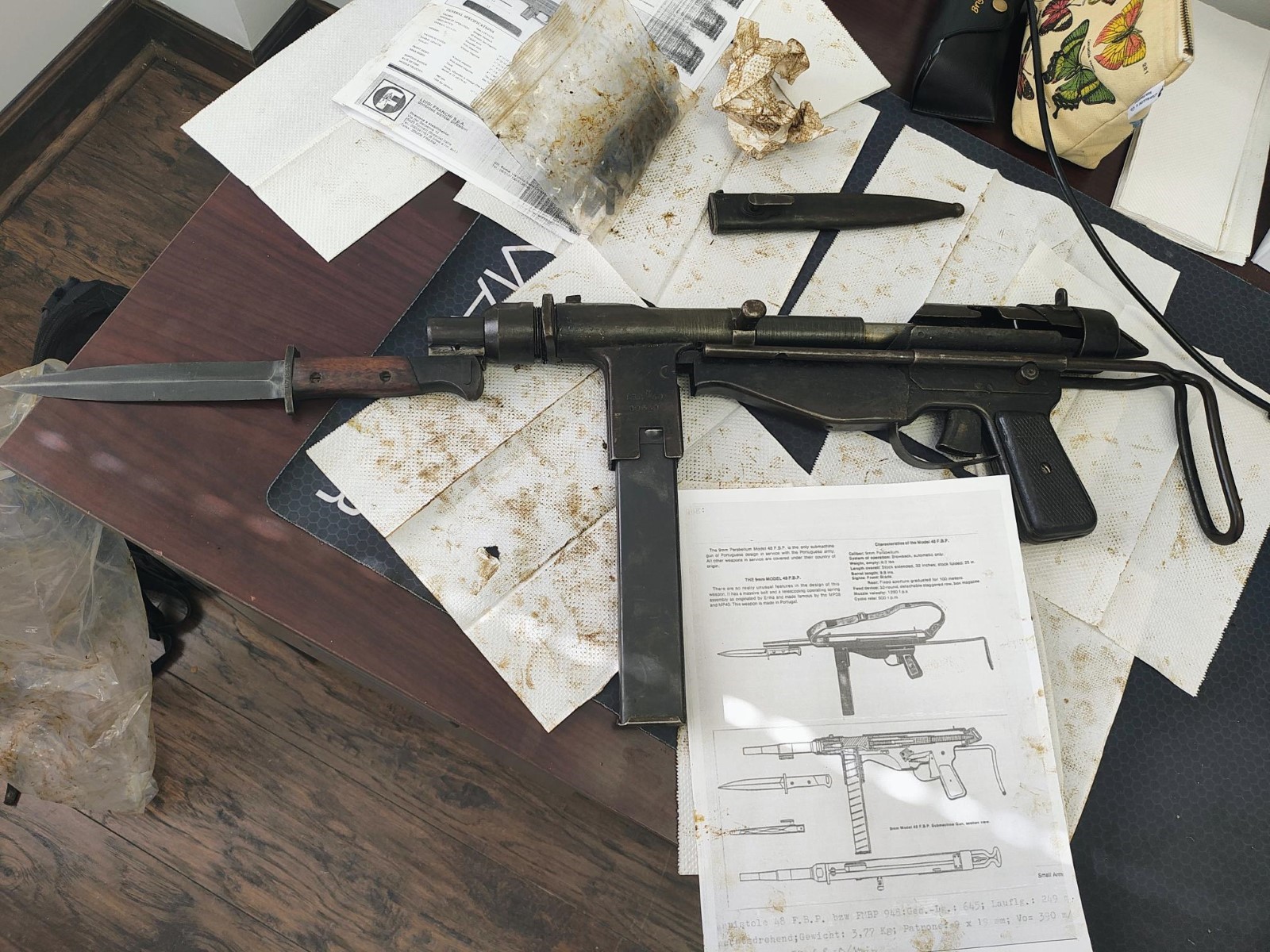
Image (4):M/948 FBP Parts kit assembled w/o barrel or receiver.
As solid as this design was, it wasn't without its faults. The lack of a safety catch lead to "safety issues" (the source didn't elaborate so use your imagination). This led to a small number of M/963 FBP submachineguns being manufactured, which included a fire-selector switch which hypothetically allowed for more accurate semi-automatic shots. I assume someone looked through the sights and realized that it was in-fact a WW2 era sub-gun; and that if the Grease gun didn't need semi-auto, then neither did the FBP. These design additions proved to be moot however, with the M/963 never seeing mainstream production. The development of the M976 FBP followed a similar narrative, utilizing a barrel cooling sleeve for prolonged fire, however it was never even adopted or exported by the FBP plant.
Operational use
The FBP was the primary sub-machine gun of the Portuguese army at the outbreak of hostilities in occupied Angola. Although it was the main domestic Portuguese design, the Army was forced to keep their best equipment and manpower in Europe per their commitment requirements to NATO. This meant the FBP would equip units in units operating in Angola for large periods of the conflict. When they would run out of FBPs to issue, they used whatever they could get their hands on until the Portuguese arms industry could catch up to the demand.
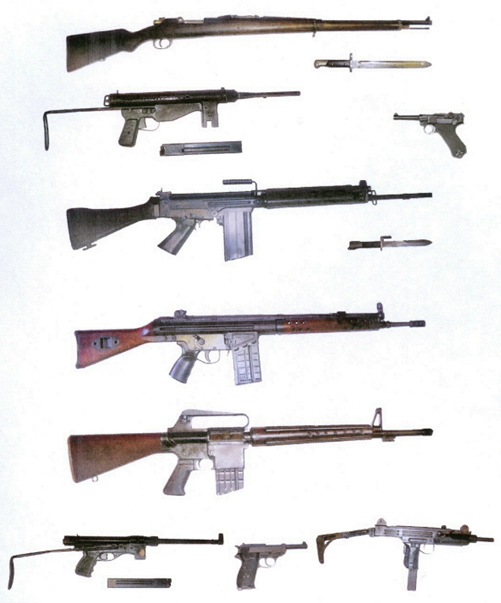
Image (4): Various arms used by Portuguese forces at the outset of hostilities in Angola.
Soldiers who were issued with the FBP found it to be very reliable and simple to use. Personally, I wonder if the wartime mechanisms and parts made it easier for Portuguese soldiers to operate it due to their potential familiarization with existing WW2 firearms. After all, that war only concluded 15 years beforehand and the Portuguese used a lot of them in Angola as well! The FBP also found its way to liberation groups in Angola, Mozambique, and Guinea-Bissau; where its simplicity and robust nature was found to be effective when equipping less conventionally trained units.
Regardless of the positive reception of the FBP by Army units on the ground, the Portuguese doctrine was changing as the FBP was a weaker 9mm submachine gun in a battlefield dominated by hard hitting battle rifles like the G3 and FN FAL. Within two years of the FBP's first combat use in Angola, many more G3s were already being manufactured than FBPs. "In 1963, 11,867 G-3s and 5,572 FBP submachine guns were manufactured; in 1964, there were 23,724 and 6,561; in 1969 the numbers were 45,660 and 694. In total, until 1988, the factory produced 442,197 G3 and19,113 FBP submachine guns." (Pinto).
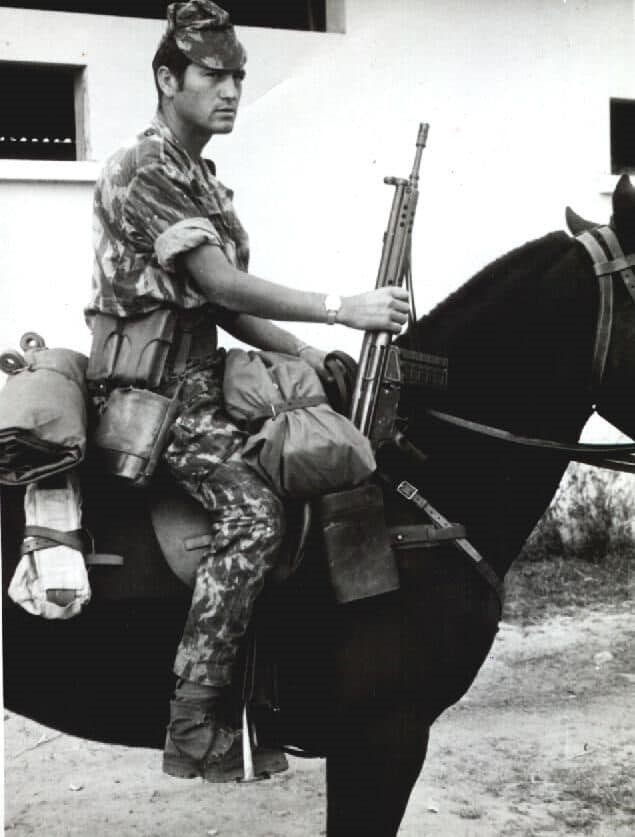
Image (5): Portuguese dragoon operating in Angola armed with his 7.62x51 G3 battle rifle.
The G3 was adopted as the official primary arm of the Portuguese army after the outbreak of hostilities because it did much of what the FBP did and more. It was manufactured in Portugal, was extremely adaptable to use in the African Bush, and was extremely modular with a host of available attachments such as grenade launchers, optics, and retractable stocks. This along with its cheap cost of manufacture secured its title as the primary arm of the Portuguese army.

Image (6): Portuguese soldiers armed with G3 rifles return fire on rebel forces.
Although the G3 would go on to dominate Portuguese military operations, the FBP did see continued manufacture until 1988 when it was eventually replaced by the H&K MP5 submachine gun. This leaves us with the question of its effectiveness. So, was the FBP effective in its designed role as an upgraded simplistic SMG? I'd say so; it included the best design aspects of WW2 design and was cheap and simple to use. The main issue was its inability to compete with contemporary arms at the time of their eventual combat use, decades after their initial design. It found itself outgunned and outranged by battle rifles and more modern SMGs of the 1960s and 1970s. All that said, the FBP represents a fascinating period in Portuguese Cold War history.
If you enjoyed learning about it, you can build one of your very own with one of our authentic FBP/948 kits! Checkout our FBP kits and accessories HERE!

Image (6): Portuguese conscript (me) assembles his FBP after misplacing the receiver and barrel (whoops)
Sources
Abbott, Peter, et al. Modern African Wars (2). Osprey Publishing, 1988.
Ezell, Edward Clinton. Small Arms Today: Latest Reports on the World’s Weapons and Ammunition. Arms and Armour Press, 1988.
Hogg, Ian, et al. Jane’s Guns Recognition Guide. Harper Collins, 2005.
Pinto, Renato. Portugal and Weapons - A History of Small Arms and Military Industries. Colibri, 2024.

